Read the descriptions opposite and decide which kind of subfloor is most suitable for your floor and , if relevant, chosen floor covering. Then follow the steps shown here for the method you need.
Tools, Materials and Supplies: Basic Tool Kit, and see this page.
Laying Plywood
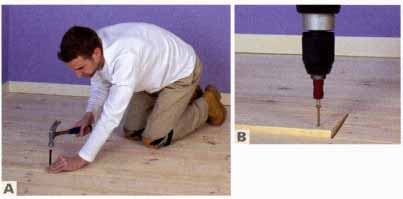
A. Sweep the floor, and check that all screws or nails sit below the surface. Drive in or countersink any protruding fasteners, ensuring that they don’t go right through the floorboards and into any wires or pipes beneath them.
B. Check whether any floorboards are loose. If they are, screw them down securely, because a subfloor must be laid on a rigid floor surface.
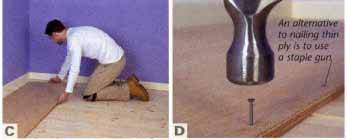
C. Pick a corner that's as square as possible for your starting point, and lay the first board. Use grab adhesive for extra rigidity.
D. Use ring-shank nails every 6 inches (150 mm) around the edges of the board. Nails should go into floorboards but not through them.
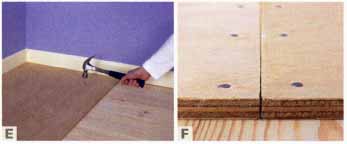
E. Apply nails every 6 in (150 mm) in a grid across the center of the board, as well as around the edges, to keep the subfloor level and firm.
F. Butt-join boards tightly. If boards need to be cut to fit, use a panel saw for straight cuts, and a jigsaw for templated cuts.
Laying 1/4" Luan Plywood
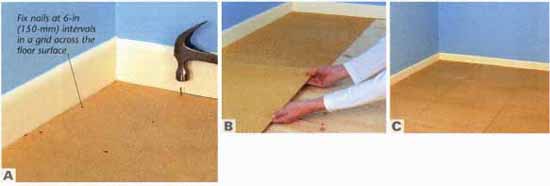
A. Prepare floor by sweeping and leveling it as shown in steps A to B for laying plywood (above). If possible, choose a square corner in which to start laying boards. Nailing is the quickest way of securing luan plywood. (Fix nails at 6-inch (150 mm) intervals in a grid across the floor surface.)
B. Butt the second board hard against the first. When placing boards, keep them as neatly aligned as possible, so that later rows fit easily into place.
C. Work across the room in rows, staggering the joints between boards on subsequent rows.
Using Self-Leveling Compound
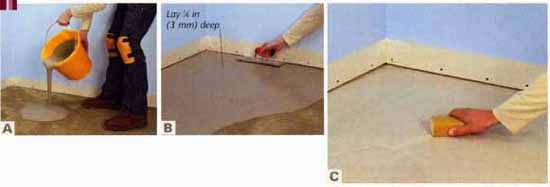
A. Block the threshold. Mix the compound, as detailed in the manufacturer’s instructions, and pour it onto the floor.
B. Use a plastering trowel to spread the compound evenly across the surface, removing any peaks and redistributing it into depressed areas.
C. Mix and lay further compound until the floor is covered, smoothing it in with the damp edges of previously poured areas. Leave the compound to dry overnight before walking on it. Then use a medium grade of sandpaper to remove any ridges that were left by the troweling.